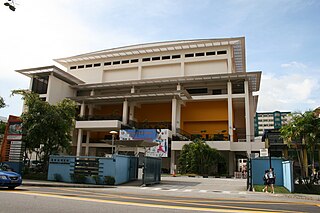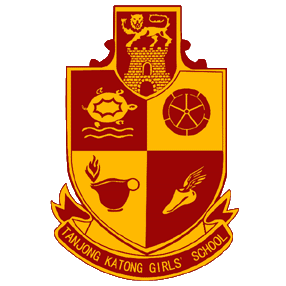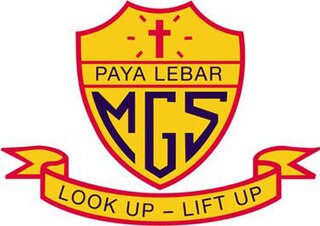Curriculum planning and development
Curriculum planning and development involves "the design and development of integrated plans for learning, and the evaluation of plans, their implementation and the outcomes of the learning experience". [9] It designs and reviews curriculum, promotes teaching and assessment strategies aligned with curriculum, formulates special curriculum programmes, creates clear, observable objectives, and generates useful assessment rubrics. [10]
Curriculum development can be described as a three-stage process encompassing planned, delivered and experienced curriculum. [9] It may be shaped by pedagogical approaches contributed by theorists and researchers, such as John Dewey, Lev Vygotsky, Jean Piaget, Jerome Bruner, and Albert Bandura. [11]
Preschool
Curriculum development at the preschool level is based on several schools of thought. The Kindergarten was established by Friedrich Fröbel in Germany in 1837. Froebel described three forms of knowledge which he viewed as essential to all learning: [12] knowledge of life, which includes an appreciation of gardening, animals and domestic tasks; knowledge of mathematics, such as geometry; and knowledge of beauty, which includes colour and shape, harmony and movement. [12] The goals of Froebel's kindergarten are to awaken a child's physical senses through learning experiences and provide a common ground for individuals to advance.
Margaret and Rachel McMillan were social reformers in England who spent their lives trying to address poverty [13] and founded the Open-Air Nursery School and Training Centre in London. Their goals were to provide loving care, health support, nourishment and physical welfare to children. [14] Assistance was provided to parents to aid them in caring for, and interacting with, their children. Pedagogical models on how to engage and interact with young children were provided. The pedagogical principles of the Nursery School may be found in educational frameworks requiring teachers to nurture and teach a curriculum which covers an exploration of the world, aesthetics, music and movement, and literacy. [12]
John Dewey formulated the theory of progressive education. [15] [16] His progressive-education philosophy embraces the idea that children should be taught how to think. Dewey was opposed to assessments, since they cannot measure whether or not a child is educated. [17] The school community should offer learning opportunities which are interesting and meaningful and prepare individuals to live in a democratic society. Children learn through doing, cooperation, problem-solving and collaboration, with the teacher acting as a guide. Projects in Dewey's curriculum encourage exploration, self-discovery and sensorial experiences which provide a holistic approach, focuses on the children's interests, and are developmentally appropriate. [18]
Montessori education was developed by Maria Montessori, who believed that children go through sensitive periods known as "windows of opportunity". [19] Everything in a Montessori classroom enhances and develops a child's growth. Materials address children's interests and the natural environment. [19] The learning environment is focused on the child. The curriculum trains children to be responsive, and promotes a desire for skills mastery. [20]
Waldorf education, created by the Austrian philosopher Rudolf Steiner, focuses on the whole child: body, mind, and spirit. [12] The curriculum is designed to provoke thought processes, develop sensitivity, and enhance creative and artistic fluency. [21] [22] The Waldorf curriculum consists of storytelling, aesthetics (arts), practical work, imaginative play, and discovery of nature. [23] Modern schools adopting Waldorf education are independent and self-governing. [12]
The Reggio Emilia approach developed in the small north-Italian city of Reggio Emilia. Influenced by constructivist theories and the progressive-education movement, it is committed to uphold the rights of individuals. [24] Key concepts in a Reggio Emilia school include a child's right to education, the importance of interpersonal relationships amongst children, teachers and parents, and children's interactions in work and play. [25] [26] Its curriculum emerges from the children's interest, and is developed through projects and inquiry. [27] Each individual plays an important role in the school, and parental involvement is a key aspect of the child's learning and development. [25]
Primary education
Curriculum development at the primary level focuses on the foundations of subjects, covering subject disciplines, knowledge skills and character development. [28] Subject disciplines are the cores and foundations of language, science, humanities, the arts, technology, and social studies. [29] [30] [31] [32] Knowledge skills are personal skills and attributes such as communication, critical thinking, teamwork and judgement, which are developed through learning experiences based on the school's pedagogical practices. [33] Character development, according to Elliot Eisner, is the implicit curriculum: the school's hidden agenda. [34] Character traits and attributes include resilience, self-discipline, empathy and compassion, focusing on the social and emotional development of each student. [35] The curriculum development is a springboard towards personal and social capability, ethical and intercultural understanding, and sound moral judgement. [36]
Secondary education
Curriculum development varies at the secondary level, based on the course (or stream) in which a student is enrolled. [37] Curriculum focuses on core subjects such as language, mathematics, science and the humanities. [38] [39] [40] Learning experiences, strategic goals, national frameworks and school philosophy are also considered in curriculum development; [41] schools consider values and progressive skills in the development of a holistic curriculum. [42] Elective and vocational programmes are offered, which include social studies, art and music, design, and technology and computer studies. [38] [39] [40] Specialized schools integrate programmes with corporate partners in information and communication technology, entrepreneurship, art, design, media and Da Vinci Learning. [43] [44] Enhanced programmes in sports, arts, and language are also offered. [45]
Tertiary education
Curriculum at the tertiary education level involves specific course design and development. Griffith University describes planning as based on previously-collected evidence; the process also involves assessment, technologically-informed learning and discipline-based capabilities. [46] The process aims to prepare students for the workforce while enhancing their understanding of a subject. Griffith University considers four key elements in curriculum development: learning analytics, external peer review, peer-based professional learning and professional learning workshops. [46]
Educational technology
Educational technology involves the integration, planning, implementation and management of information and communications technology (ICT) for effective learning and teaching. [47] The educational-technology branch of an education system conceptualizes and develops ICT in education, integrating it with curriculum frameworks, staff development and management.
The focus of educational technology has shifted to online and web-based applications, learning portals, flipped classrooms and a variety of social networks for teaching and learning. [48] Although educational technology includes ICT, it is not limited to hardware and educational theoretics. It encompasses several domains including collaborative learning, learning theory, linear learning, online portal learning, and (where mobile technologies are used) m-learning. These domains contribute to a personalized learning model and promote self-directed learning, as students take charge of their education.
Special education
Special education aims to facilitate a healthy learning environment for children with special needs or disabilities, giving all children an insightful and fruitful learning experience. [62] [63] Special education may be provided in mainstream schools or specialised schools. [64] [65] The appropriate choice of learning institution depends on the child's needs and the services available. Children may display learning difficulties or require additional materials for learning. Relevant courses are designed for children on the autism spectrum or with intellectual disabilities, visual impairment, hearing loss or cerebral palsy. [66] Additional assistance may be provided by social-service, non-governmental and voluntary welfare organisations and corporate partners.
The department tries to ensure that students with disabilities can participate in the school curriculum on the same basis as their peers. [67] It encompasses all education, including specialised schools and support classes; [67] this is key to ensuring student diversity. Special support services include accommodations, consultations, and personalised learning. Allied educators provide a high level of interaction with each child. [68] A multidisciplinary team of psychologists, special educators, and therapists fosters appropriate, meaningful learning. [69]















